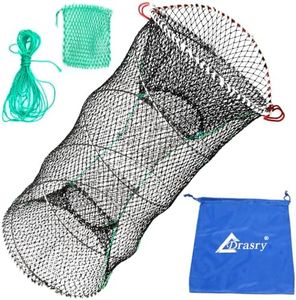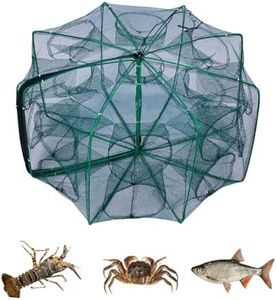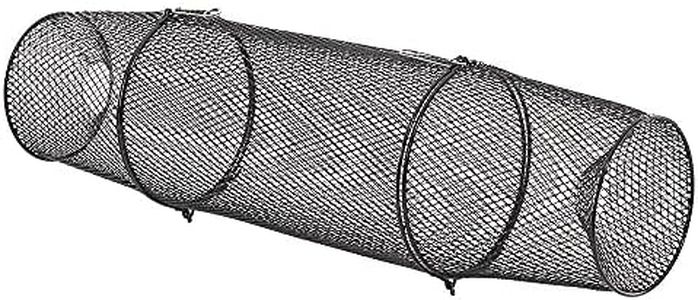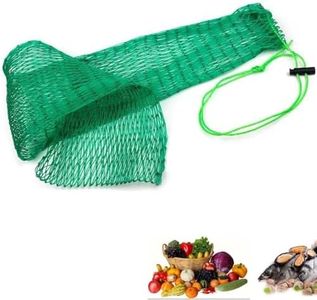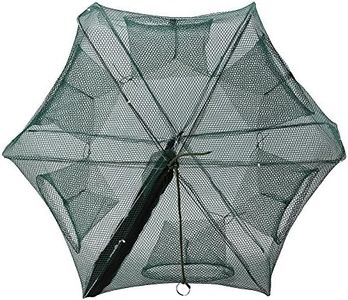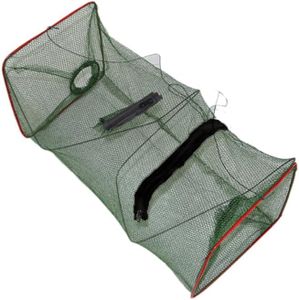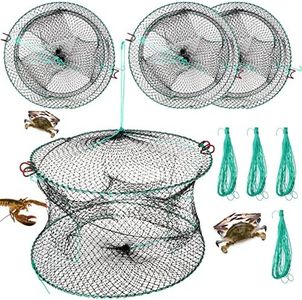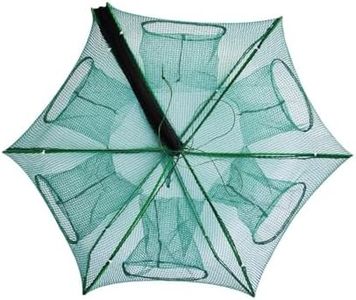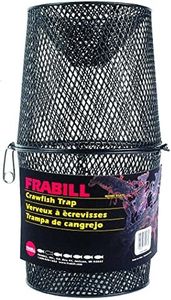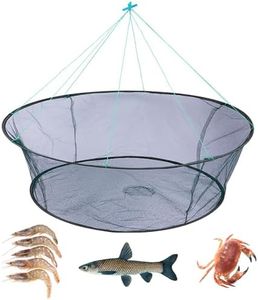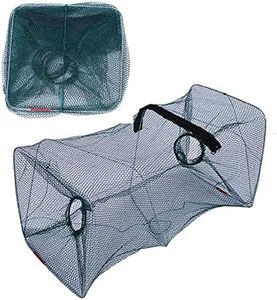We Use CookiesWe use cookies to enhance the security, performance,
functionality and for analytical and promotional activities. By continuing to browse this site you
are agreeing to our privacy policy
10 Best Crayfish Traps
From leading brands and best sellers available on the web.Buying Guide for the Best Crayfish Traps
Choosing the right crayfish trap can make your crayfish catching experience both enjoyable and productive. It's important to consider where you plan to use the trap and how many crayfish you hope to catch. The design and features of traps vary to suit different water conditions and target species, so understanding the essential specifications will help you find the best fit for your needs.Trap MaterialTrap material refers to what the crayfish trap is made from, commonly wire mesh, plastic, or sometimes traditional materials like wood or cane. This matters because it affects durability, longevity, and how resistant the trap is to rust or wear. Wire and coated mesh traps are sturdy and ideal for frequent use or rough waters, while plastic options may be lighter and suitable for occasional, easy-handling needs or for environments where rust could be a problem. Choose a material based on whether you prefer longer-lasting strength or lightweight convenience.
Entrance DesignA key to catching crayfish is how they get into the trap, so entrance design covers the presence and size of funnel-shaped entrances and their placement. Some traps have multiple entrances to increase the chances of catching crayfish, while others have a single entrance for gathering specimens more selectively. Smaller entrances may help keep other fish out, while larger openings make it easier for bigger crayfish to enter. Consider how easy you want it to be for crayfish to get in versus how much bycatch (unwanted creatures) you want to avoid.
Trap SizeTrap size refers to the overall dimensions of the trap, both its length and width, as well as its internal volume. Larger traps can catch more crayfish in one go but are bulkier and may be harder to transport or handle. Small traps are easier to carry and fit in tight spaces but may not hold as many crayfish at once. Your choice should depend on whether you plan to catch large numbers at a time, or just enough for personal use or bait.
Mesh SizeMesh size indicates the size of the openings in the netting or wire. Larger mesh lets smaller crayfish and debris escape, making the trap selective for bigger crayfish, while finer mesh is better for catching smaller ones, though it may fill with mud or plants more easily. Choose mesh size according to the typical crayfish in your area and whether you want only the largest specimens or are happy with any size.
Ease of Use and PortabilityThis specification covers how simple the trap is to set, check, and transport. Features like collapsibility, carrying handles, or lightweight construction help make the trap easier to move between sites and store when not in use. If you need to check traps frequently or carry them long distances, these features become more important. Think about how you'll transport your trap and how often you’ll move it.
Legal ComplianceLegal compliance means ensuring the trap fits local fishing regulations, which often specify acceptable sizes, entrance types, and markings for crayfish traps. This is crucial because illegal traps can lead to fines or confiscation. Regulations can dictate maximum dimensions, mesh or entrance sizes, and how your trap should be labeled. Always check local guidelines before making a choice to ensure your trap is allowed where you'll use it.
